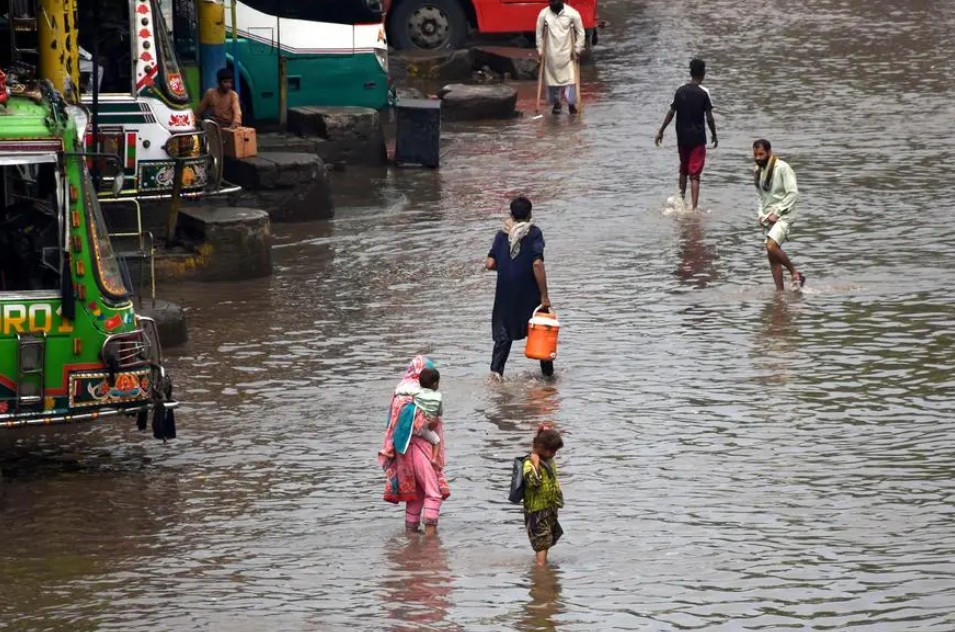
Islamabad: Pakistan remains on flood alert as the ongoing monsoon continues to cause widespread disruptions across the country. Authorities have issued warnings of moderate to heavy rainfall, rising river levels, and the threat of flash floods in vulnerable regions.
The National Disaster Management Authority (NDMA) and the Punjab Provincial Disaster Management Authority (PDMA) urged residents to stay alert and steer clear of low-lying and flood-prone areas. These alerts are valid until July 17.
Intensified by moisture from the Arabian Sea, the monsoon remains active over Punjab, with intermittent rainfall in Lahore increasing humidity levels. Since June 26, the monsoon-induced rains and flash floods have resulted in at least 98 deaths and left 185 injured nationwide, according to NDMA reports.
Punjab has suffered the highest fatalities, with 37 deaths—including 20 children—while Khyber Pakhtunkhwa recorded 30 lives lost. The Pakistan Meteorological Department (PMD) forecasts temperatures in Lahore to range between 27°C and 33°C, with light showers expected, prompting the PDMA to issue rainfall and wind alerts through July 17.
The NDMA’s National Emergency Operations Centre has issued a hydrological outlook from July 13 to 17, warning that ongoing monsoon activity could intensify rainfall. All major rivers, including the Indus, Kabul, Jhelum (upstream of Mangla), and Chenab, are expected to see increased flows due to western winds, as reported by The Express Tribune.
Regions in Balochistan—particularly Jhal Magsi, Kachhi, Sibi, Killa Saifullah, Zhob, and Musakhel districts—face potential flash floods, along with localized flooding threats in Khuzdar, Awaran, Lasbela, and Kalat. Residents near rivers, nullahs, and drainage channels are advised to remain vigilant, especially during night rains. Authorities recommend identifying safe evacuation routes and securing valuables, vehicles, and livestock in elevated areas.
District administrations in Punjab’s northeastern and central areas have been instructed to keep dewatering equipment ready to combat urban flooding. Karachi is also under heightened warning, with the monsoon system expected to intensify due to Arabian Sea moisture, causing high river flows in some locations.
In Islamabad, forecasts indicate varying flood levels: Tarbela, Taunsa, and Guddu remain at low levels, while Kalabagh and Chashma face moderate flooding, with water levels in Taunsa predicted to rise. The Khyber Pakhtunkhwa region has experienced increased flash flood risks due to continuous rainfall, especially in Swat and Panjkora tributaries. Heavy downpours in Charsadda, Tangi, and nearby areas caused the Jendi River to overflow on Thursday night.
In response, spillways at Playi Dam were opened to release approximately 8,000 cusecs of water, resulting in the flooding of a bridge and a gas pipeline in Tangi tehsil, according to Dawn. The district administration has converted 53 government schools into temporary shelters for evacuees, and various agencies are actively involved in evacuations from affected areas.
